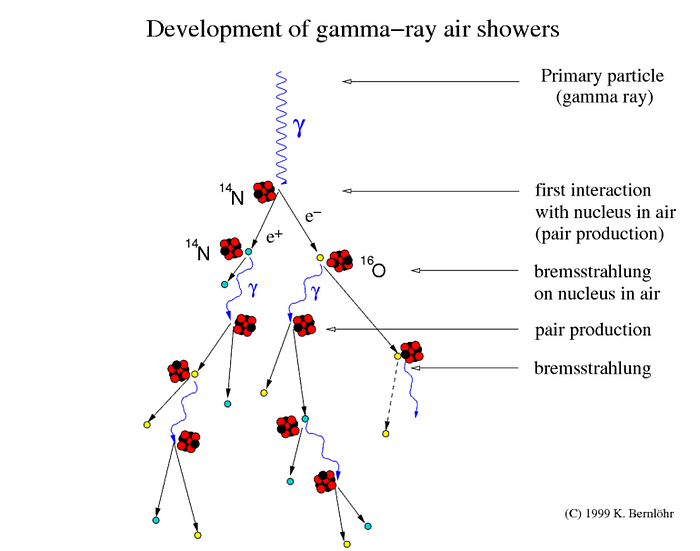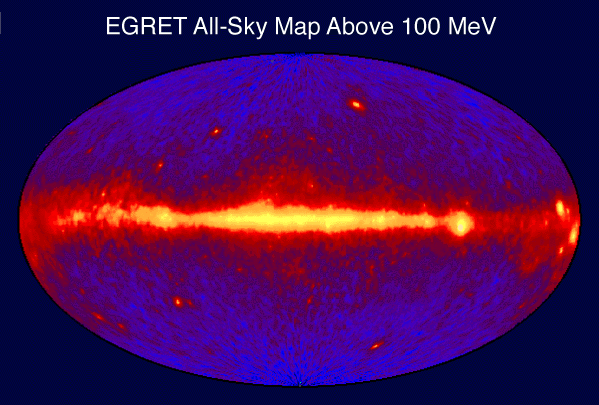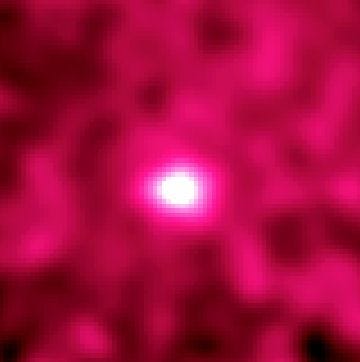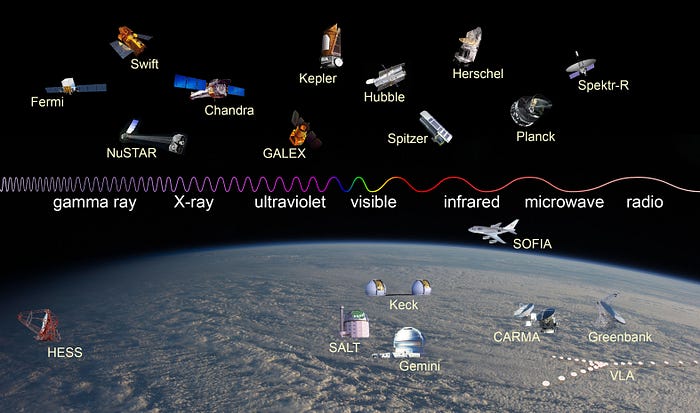The Gamma Rays from Space & Detectors
Sorry! But I will not talk about Hulk in this article. OK! just a little after this…
The gamma ray’s radiation cause damage at a cellular level because they are so penetrating, causing diffuse damage throughout the body and life. Nobody could survive on Earth with a direct exposition from this frequency of radiation without a shield. The perfect super shield from Earth is the atmosphere.
The gamma rays are the most powerful radiation known in nature. The most energetic form of light.
When a particle gamma ray is coming from space and interact with the atmosphere, a gamma ray air shower is produced. Its a kind of cascade that makes pair production of positron & electrons. Such charged particles produce secondary gamma rays by the mechanisms of bremsstrahlung and so on. The next figure simulates gamma ray air showers developing.

Today, almost unknown phenomena occur in the cosmos or with little understood physics. One example would be the emission of gamma rays associated with explosions of supernovae and their remnants or just a supernova remnant (SNR) resulting from the explosion of a star in a supernova. One SNR called Crab Nebula is shown in the next picture. This remnant SN 1054 is very useful for human experiments and detections of gamma rays because is used like a main source and calibrator for some direct and indirect instruments, because emit constantly a bunch of gamma rays.

Another example would be the flashes of gamma rays called Gamma Ray Bursts (GRBs) traveling close at speeds of light in the vacuum through space and therefore some of them towards the Earth. These gamma-ray bursts are among the most powerful events in the universe [1, 2]. Suggested progenitors for GRBs include neutron star-neutron star or neutron star-black hole mergers. GRBs are the most intense sources of any type of electromagnetic radiation presently in nature known.
In this way, a direct exposition by this radiation through a human being will killed him and the Hulk transformation should be impossible and will not be true yet.
Our eyes, despite being a surprising and complex information system, are unable to see at a glance these frequencies of electromagnetic radiation. Neither do they perceive the consequences of these phenomena on our planet, from their arrival into the atmosphere to the level of the sea.
However, there are some direct and indirect detectors of gamma rays. The tools of high-energy physics are used to detect and characterize gamma-ray photons and allow scientists to observe the cosmos up to energies of 1 TeV (1,000,000,000,000 eV, where an optical photon has an energy of a few eV) and beyond. For example, a direct detector is the Large Area Telescope on the Fermi Gamma-ray Telescope (LAT). A beautiful animation and explanation of gamma rays from a pulsar for example, LAT and GBM is shown here https://www.youtube.com/watch?v=ESkHDCEAqZk.
Other instrument is the EGRET aboard the Compton Gamma Ray Observatory (CGRO) spacecraft. A sky map sources and the gamma rays from moon have detected by this instrument and are shown in the next picture.


These gamma rays from moon are produced by cosmic ray bombardment of its surface. The Sun, which has no similar surface of high atomic number to act as target for cosmic rays, cannot usually be seen at all at these energies, which are too high to emerge from primary nuclear reactions, such as solar nuclear fusion (though occasionally the Sun produces gamma rays by cyclotron-type mechanisms, during solar flares). Gamma rays have higher energy than X-rays.
Some instruments & observatories across the electromagnetic Spectrum is shown in the next picture.

The represented observatories are: HESS, Fermi and Swift for gamma-ray, NuSTAR and Chandra for X-ray, GALEX for ultraviolet, Kepler, Hubble, Keck (I and II), SALT, and Gemini (South) for visible, Spitzer, Herschel, and Sofia for infrared, Planck and CARMA for microwave, Spektr-R, Greenbank, and VLA for radio. Click here to see this image with the observatories labeled.
(Credit: Observatory images from NASA, ESA (Herschel and Planck), Lavochkin Association (Specktr-R), HESS Collaboration (HESS), Salt Foundation (SALT), Rick Peterson/WMKO (Keck), Germini Observatory/AURA (Gemini), CARMA team (CARMA), and NRAO/AUI (Greenbank and VLA); background image from NASA)
On the other hand HAWC is a very high-energy gammaray observatory constructed in Mexico at an altitude of 4100m. It will observe atmospheric air showers via the water Cherenkov method. http://www.hawc-observatory.org
Until today, some report’s results of HAWC observations of 64 gamma-ray bursts (GRBs) detected by Swift and Fermi, including 3 GRBs that were also detected by the Large Area Telescope (Fermi-LAT) could be found here http://iopscience.iop.org/article/10.3847/1538-4357/aa756f


Yes! I know what are you thinking… I was exposed to a bunch of extensive air showers, but nothing matters. Worry be all the people traveling in airplane very often because all of them are up 41.000 feet. So, the atmosphere shield is less than on the ground and radiation could affect you with the time. Maybe some Hulk could be appear some day over there inside of you aboard an air plane. I am just kidding!
References
[1] N. Gehrels, E. Ramirez-Ruiz, & D. B. Fox, Gamma-Ray Bursts in the Swift Era, Ann. Rev. A&A, 47 (2009) 567–617
[2] J. L. Racusin et al., Broadband observations of the naked-eye big gamma-ray burst GRB 080319B, Nature 455 (2008) 183–188
https://www.youtube.com/watch?v=ESkHDCEAqZk.
